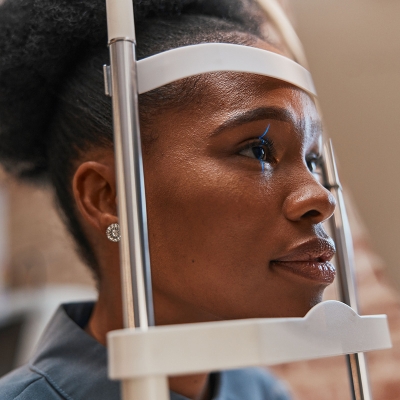5 eye exercises for better focus and clarity
People can sharpen their vision, focus and more, even outside of their eye care provider’s office. Here are some potential options.

People go to their eye care providers for a number of reasons. They could be staying on top of their eye health by getting regular eye exams, needing new glasses or a contact lens prescription, or they could need treatment for an eye condition.
If a person is having trouble focusing or is dealing with vision issues, they have some options. Certainly, talking to their eye care provider is one.
Another can be taking their eye care program home with them. An eye care provider might recommend ways to boost focus and clear vision — and they could come in the form of vision therapy, that can consist of certain eye exercises.
Here’s a short guide to the best eye exercises.
Another great way to boost focus and vision? Ordering a new pair of glasses. You can do this online and even use our virtual mirror to “try them on.” Skip the store and try them on now.
What is vision therapy, and why might an eye care provider suggest them?
Vision therapy is a way for children and adults to learn how their eyes and brain work together to see better. They can do that by reading, concentrating and being attentive.1
Vision therapy uses eye exercises to help strengthen the eye muscles. This allows people to better control the way they see things.1
An eye care provider might recommend vision therapy for people with these issues:1,2
- Convergence insufficiency (a person’s eye drifts inward and outward)
- Depth perception and 3D vision issues
- Digital eye strain (a condition caused by using digital devices for long periods)
- Dizziness
- Eye teaming and tracking issues
- Lazy eye (one eye has weaker vision than the other)
- Motion sickness
- Nystagmus (a condition with uncontrolled eye movements)
- Strabismus (a condition where the eyes don’t properly align)
- Trouble seeing in the normal field of vision
For children, vision therapy can help them with things like:3
- Concentration and attention
- Hand-eye coordination
- Reading fluency and comprehension
- Self-esteem
- Spelling
- Visual memory
- Writing
If a person or their child has any of these vision problems, they should talk to their eye care provider. Some of these issues might be due to needing glasses or a change in glasses or contact lens prescription. If the prescription is correct, vision therapy may be the next step.
5 eye exercises to try for better focus and clarity
An eye care provider might suggest eye exercises that a person can do at home — and even during work. Here are 5 potential options:4
1. Try the 20-20-20 rule. One of the simplest and most effective exercises is the 20-20-20 rule. Every 20 minutes, a person will want to take a break from their screen and look at something 20 feet away for 20 seconds. This can help reduce digital eye strain and improves your ability to focus.
2. Focus near and far. Sit in a comfortable chair with feet flat on the floor. Put one thumb around 10 inches away from the face. Stare at it for 15 seconds. Break focus and look at something around 10 to 20 feet away for 15 seconds. Bring focus back to the thumb. Repeat this exercise 5 times.
3. Do the figure eight exercise. A person will want to focus on a spot on the floor about 10 feet away. They’ll then want to visually “draw” a figure eight with their eyes. Continue doing so for 30 seconds, then switch directions. This helps improve focus and can reduce eye strain.
4. Grab a pencil for pushups. This can help with eye convergence. That’s the ability to coordinate the eyes inward and focus on a nearby object. Hold a pencil at arm’s length between the eyes. Slowly move it toward the nose, while trying to see it as a single image. Continue bringing it toward the nose until it’s no longer a single image. Move it back to the point where it looked like a single image. Try this 20 times.
5. Roll the eyes. Close the eyes. Gradually, raise the eyes upward, then lower them downward. Repeat 3 times. Now, gradually move the eyes left, then right. Repeat 3 times. This exercise helps improve the range of motion in the eyes and can reduce eye strain.
UnitedHealthcare Vision members also have access to discounts on screen protectors with blue light filtration technology and blue light glasses and readers to help protect their eyes from digital eye strain.
What to do if vision therapy or eye exercises don’t work
If a person is still having eye or vision issues, the best thing to do is see an eye care provider. They can help figure out next steps or tweak a person’s treatment options.
A great way to do this is with vision insurance. For example, members of the UnitedHealthcare Vision Network can find eye care providers that can help them with a range of issues. They may receive benefits like a fully covered annual eye exam or an allowance for glasses or contact lenses.
UnitedHealthcare Vision offers a huge selection of designer eyeglasses — and vision insurance can help pay for them.
Sources:
- What is vision therapy? Optometrists Network
- 9 Eye Conditions Improved With Vision Therapy Optometrists Network
- 8 ways vision therapy helps my child Optometrists Network
- Eye Exercises You Can Do at Home Optometrists Network


